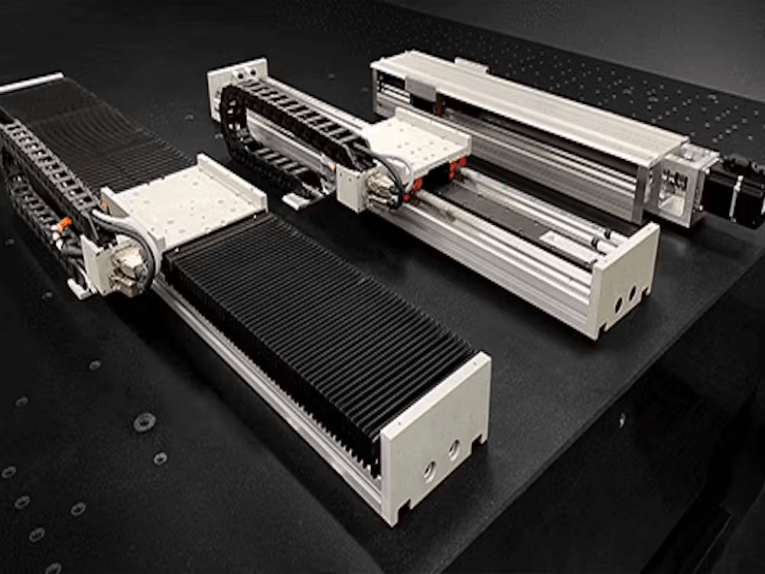For linear motion there are multiple options from motion screws to belt and rack & pinion drives. Here we will make you familiar with two motion screw types. Ball screws are a better choice for applications requiring smooth motion, efficiency, accuracy, precision and prolonged continuous or high-speed movement. Then again, traditional lead screws are more suitable for transfer applications, where speed, accuracy and precision do not play a critical role.
Ball screw
Ball screws use ball bearings to eliminate the friction between the nut and the screw, making the mechanism more efficient. As a result, the efficiency of the ball screw will be as high as 96 %. Ball screws can also achieve high accuracy, smooth movement, high wear resistance and significantly higher efficiency under high load ratings than lead screws. As a disadvantage on the other hand, the ball screw mechanism is more expensive compared to lead screws. Ball screws also require lubrication, which may cause issues in clean environments, such as with medical and food processing applications.
Ball screw properties:
1. High accuracy for positioning
2. Smooth movement
3. High load ratings in dynamic applications
4. High efficiency
5. Low drive power requirements
6. Low self-heating due to low friction
7. High lifetime with minimum need for maintenance
Lead screw
Lead screws are based on a helical screw with a mating nut. Compared to ball bearings, the sliding contact causes more friction, so lead screws are generally less efficient and less accurate than ball screws. For this reason, lead screws are commonly used in less demanding applications, and they are not optimal for high-throughput, high-speed or continuous movement applications.
However, the friction coefficient depends heavily on the materials of the screw and the nut. For example, when using nut materials containing lubrication additives, such as plastic, no additional external lubrication is needed. That makes the lead screw an ideal solution for clean environment applications. However, as a disadvantage, a structure-specific “stick-lip” may cause problems with precise motion solutions, due to the difference between rest friction and motion friction.
Lead screw properties:
1. Small to medium load ratings
2. Tailored materials and coatings
3. Self-locking mechanism
4. Low noise level
5. Cost-effective
Tasowheel manufacturing process
Tasowheel manufactures screws by grinding, so the manufacturing method does not set any limitations for the screw design. The thread can be machined exactly to the desired position with the desired length, and the screw can be integrated into the actuator components if needed.
Grinding as a manufacturing method enables a smaller pitch error and minimized movement clearance, thus optimizing movement accuracy. In addition, manufacturing the screw by grinding allows the use of particularly hard materials, which cannot be produced by rolling. When using grinding, the final shape can also be machined into a pre-hardened part.
In addition, grinding enables the manufacturing of special shapes, as the manufacturing method does not limit the optimal design of the motion solution. Tasowheel can manufacture screws up to 200 mm in diameter, and up to 600 mm in length.
There are various other requirements for a movement solution, such as noise level, footprint, wobbling, external conditions and expected lifetime. Still, in most cases, the initial evaluation of load and accuracy requirements gives adequate guidelines for choosing the right solution.
Post time: Jan-06-2024








